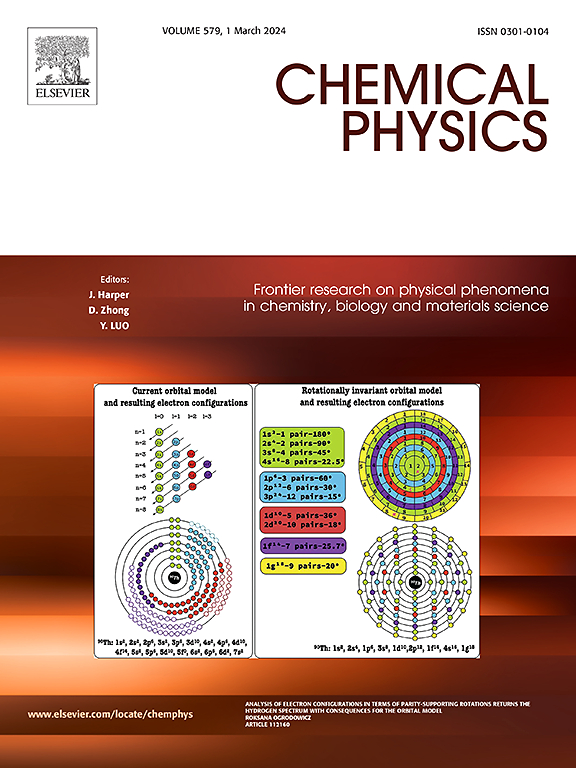尖晶石型镍氧化铁锚定导电聚合物聚苯胺:一种新型析氢反应电催化剂
IF 2
3区 化学
Q4 CHEMISTRY, PHYSICAL
引用次数: 0
摘要
对可持续能源日益增长的需求促使研究人员强调建立强电活性催化剂以改善水分解过程。水电解研究需要电活性催化剂具有优异的电催化效率和生态友好性,以开发可观的氢能源。本文采用水热析氢反应法制备了NiFe2O4/PANI纳米复合材料。采用各种物理方法对制备的电催化剂进行了结晶度、比表面积和元素组成分析。在1 M KOH下研究了制备的NiFe2O4/PANI纳米复合材料的电化学性能,显示出独特的HER性能,最小过电位(±)为- 161 mV,产生电流密度(j) -10 mA/cm2,大大小于原始NiFe2O4的- 218 mV。此外,电催化剂NiFe2O4/PANI达到最小的塔菲尔斜率(63 mV/dec),通过计时电流技术评估,提供了延长耐用性(50小时)的电子传递手段。NiFe2O4/PANI具有较大的表面积、多个活性位点、优异的耐久性、快速的电子传输、最小的电阻率和合适的导电性,因此在水电解和其他电化学过程中具有很高的潜力。因此,这项工作表明,高效的NiFe2O4/PANI纳米复合材料可以作为未来能源相关应用的催化剂。本文章由计算机程序翻译,如有差异,请以英文原文为准。
Spinel-type nickel iron oxide anchored on conducting polymer PANI: A novel electrocatalyst for hydrogen evolution reaction (HER)
The growing need for sustainable energy has encouraged researchers to emphasize on establishing strong electroactive catalysts for improved water-splitting processes. Water-electrolysis study demands electroactive catalysts having outstanding electrocatalytic efficiency and ecologically friendly characteristics to develop considerable hydrogen energy sources. In this work, NiFe2O4/PANI nanocomposite was produced through a hydrothermal approach for hydrogen evolution reaction (HER). The manufactured electrocatalysts were investigated via various physical approaches to analyze the crystallinity, surface area and elemental composition. The electrochemical performance of fabricated NiFe2O4/PANI nanocomposite was studied under 1 M KOH, revealing distinctive HER performance with least overpotential (ƞ) of −161 mV to yield current density (j) -10 mA/cm2 which is substantially smaller than −218 mV found for pristine NiFe2O4. Additionally, electrocatalyst NiFe2O4/PANI attains least Tafel slope (63 mV/dec), provides means of electron transport with prolonged durability (50 h) as evaluated by chronoamperometry technique. NiFe2O4/PANI has a high potential for water electrolysis as well as other electrochemical procedures owing to its large surface area, several active sites, outstanding durability, fast electron transportation, minimal resistivity and suitable electrical conductivity. As a result, this work shows that the highly effective NiFe2O4/PANI nanocomposite serves as the catalyst for future energy-related applications.
求助全文
通过发布文献求助,成功后即可免费获取论文全文。
去求助
来源期刊

Chemical Physics
化学-物理:原子、分子和化学物理
CiteScore
4.60
自引率
4.30%
发文量
278
审稿时长
39 days
期刊介绍:
Chemical Physics publishes experimental and theoretical papers on all aspects of chemical physics. In this journal, experiments are related to theory, and in turn theoretical papers are related to present or future experiments. Subjects covered include: spectroscopy and molecular structure, interacting systems, relaxation phenomena, biological systems, materials, fundamental problems in molecular reactivity, molecular quantum theory and statistical mechanics. Computational chemistry studies of routine character are not appropriate for this journal.
 求助内容:
求助内容: 应助结果提醒方式:
应助结果提醒方式:


